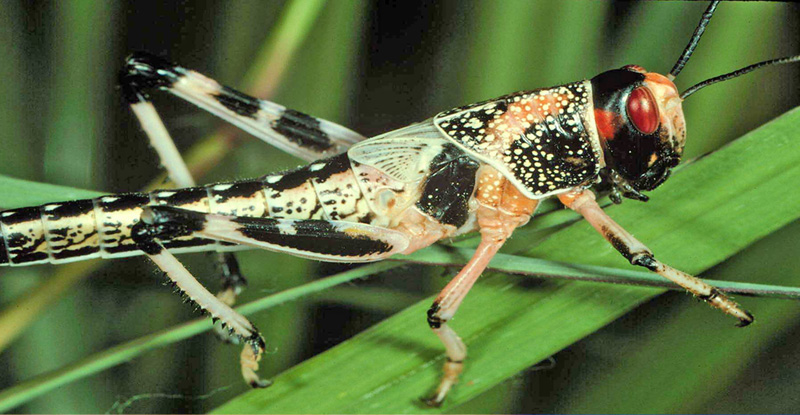Insect of the Month (March): Desert Locust, Schistocerca gregaria
The year 2020 marks the 50th anniversary of the International Centre of Insect Physiology and Ecology (icipe).
icipe was established in 1970 by the late internationally renowned Kenyan scientist, Prof. Thomas Risley Odhiambo, at a time when the very notion that insect science – or indeed, the then woefully small indigenous scientific communities – could contribute to a prosperous future for Africa must have seemed audacious to say the least.
icipe has progressed and flourished just as envisioned. Today, the Centre stands as a source of pride for Kenya and for Africa, with well-deserved regional and international acclaim as the only institution on the continent working primarily on insects and other arthropods, and a hub of scientific excellence and capacity building.
This esteem has been achieved through unwavering commitment to the Centre’s original vision of elevating the lives of communities across Africa, by providing solutions that are environmentally safe, pre-empt the use of harmful chemicals, are affordable, accessible and easy-to-use, for the management of pests of crops, and disease transmitting insects. Moreover, our science-led strategies are helping communities, especially those in marginalised areas, to exploit beneficial insects, like bees and silkworms, while protecting the environment. We have also pioneered research in the exciting area of insects as alternative sources of food for people and feed for livestock, and other uses like organic waste conversion. Our holistic approach contributes to improving household and national incomes, employment and nutritional security of many people in Africa, transforming livelihoods in an inclusive manner, especially for women and the youth.
Our golden jubilee is embodied in the slogan: ‘Insects for Life’ – a dual expression of the interlinkage between icipe 4H research approach that encompasses: Human, Animal, Plant and Environment Health; and the unwavering commitment of the Centre to its vision and mission. In tandem, we are running an Insect of the Month series that provides an illustration of intricate interlinkage between insects and livelihoods, in Africa and beyond.
The desert Locust, Schistocerca gregaria
The desert Locust, Schistocerca gregaria, represents the most challenging and harmful of all major plant feeding insects. It can transform from a solitary lifestyle to a highly cohesive and mobile gregarious form under appropriate environmental conditions. In the gregarious form it threatens agricultural crops and grazing land in as many as 65 countries of Northern, Eastern and Western Africa, the Near East and Western Asia. Loss of food puts communities at risk in localities where food supplies are already precarious. Uncontrolled outbreaks can grow explosively, resulting in plagues, which can last several years. Control strategies based on a large-scale application of synthetic pesticides results in enormous economic and environmental costs. It is estimated that during the 1986-89 plague, over 15 million liters of broad-spectrum synthetic liquid pesticide and 5,000 tons of pesticide dust at an estimated cost of more than US$ 200 million were used over 17 million hectares of ecologically fragile lands. In 1992-4, a major upsurge occurred and about US$ 45 million was spent on 4 million hectares. The full effects of these on the environment, and specifically on beneficial organisms including pollinators, detritus feeders, predators, parasitoids, birds, fish and other aquatic animals, and humans, are often not fully assessed. The need for a significant change in the strategy adopted and, in the tools, employed to control the desert locust is widely recognized. By studying the chemical ecology of the desert locust, icipe scientists in the early 2000s developed a “Preventive Locust Control” strategy based on combining early detection of locust hoppers and treatment with a blend of pheromones and sublethal doses of biopesticides and insecticides.


